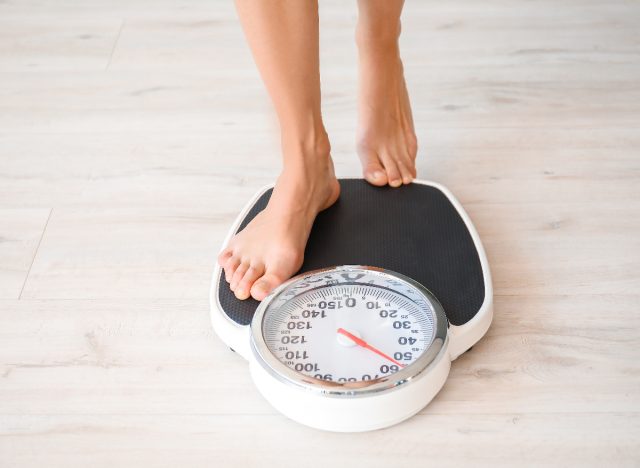10 Signs Your Fitness Routine Isn't Working—and What To Do About It

We all want to improve our health and look our very best. To do that, establishing the right fitness routine is mandatory. From cardiovascular work, like jogging, biking, cross-training, etc., to strength training, like weight training, bodyweight circuits, kettlebells, etc., all of it adds up to create your weekly routine. However, not all fitness regimens are created equal. We're here to help with 10 signs your fitness routine isn't working and what to do about it.
Following the wrong routine could lead to slower progress and unnecessary work; in more extreme cases, it could mean injuries, fatigue, and just overall loss of motivation. While it can be hard to realize your routine is failing you, the sooner you know it, the better because you can take action to fix it.
In this article, we'll review the 10 most critical signs that your fitness routine isn't getting you the results you deserve. Some of these are common, but others are also lesser known. In other words, even if you've been training for many years, you might still be committing these errors.
Finally, we'll give you some great advice for each sign on how to address it so that you can enhance your training program and see the difference in your body.
Now, let's explore 10 signs your fitness routine isn't working and what to do about it.
You're not losing fat.

If your goal is to slash the flab on your body, your fitness routine needs to move you toward that goal. Whether performing strength training or cardio, your exercise must burn calories and increase your metabolism. To track your progress, however, it isn't ideal to only look at the scale because your weight fluctuates daily due to everything from your food to water retention and more. Instead, measure your body fat every month with calipers or other tools.
If those numbers still aren't going down, that's a big red flag that your routine isn't working. Challenge your body with strength training and increase your resistance; don't just perform endless hours of cardio. In addition, make sure you're going often enough to the gym. Sometimes, adding an extra weekly workout is enough to start seeing progress where it matters most.
You're not losing weight.

As previously noted, only looking at the scale isn't the best way to track progress. However, if you are obese or overweight, ultimately, you still need to see your weight decline to know you're succeeding.
In that case, take a hard look at your training routine and your diet. Most people massively underestimate how many calories they consume—just an extra tablespoon of oil for every meal adds up, but it's not noticeable to the untrained eye. For this, I recommend keeping a food diary and tracking what you eat and drink for three to four days. It's enough to reveal these blind spots so you can adjust and continue to make progress.
You're not gaining strength.

When you do resistance training—whether with dumbbells, barbells, kettlebells, bodyweight exercises, etc.—you'll naturally gain strength in those movements. But if you notice your strength hasn't really changed, that's a telltale sign something's not working.
For this, gradually increase the weight or resistance with each exercise. For example, if you're doing squats with a 20-pound dumbbell, increase the weight to 25 pounds next week, then 30 pounds the following week, etc. That way, you keep challenging your muscles, joints, and tendons to grow.
On the other hand, if you're very experienced in the gym and struggling to increase the weight of your exercises, you might be training your body too hard so that it doesn't have a chance to recover. In that case, lower the weights and sets by 30% for just a week, and then return the following week at your normal numbers.
You don't do recovery.

Lately, there's been a shift in fitness to be high intensity. Everything is about pushing yourself to the max, pushing your heart rate to the highest ranges possible and for the longest periods of time. But the problem is that it's very stressful on the body, and the more stress you put on it, the more time your body needs to recover.
If you don't incorporate recovery into your fitness routine, it will always be suboptimal. Over time, this can lead to exhaustion, injuries, pain, and more. Instead, dedicate at least one day a week to some relaxation and recovery. Whether that's a relaxing walk, bike ride, or swim, it will do wonders to reset both your body and mind. In addition, always recover after you train by drinking enough fluids to rehydrate yourself and eating a protein-rich meal to repair your muscles.
Your endurance isn't improving.

As you start training, the endurance of your muscles and cardiovascular system will increase. But as you continue training, those improvements become smaller and smaller. That's why it's important to keep seeing improvements in your conditioning, which has many benefits in and out of the gym.
If your endurance isn't improving and you still feel tired toward the end of your workout, run, hike, swim, etc., that's a big sign. In that case, spend less time on high-intensity work and more time on low-intensity training to improve your aerobic system. Also, take at least one to two days off from training every week so that your body recovers.
You're getting bored.

Let's be clear: A good fitness routine will be a little repetitive. You can't do a brand-new workout every time because you won't see progress. Truthfully, you should repeat the same exercises for several weeks to learn the movement, increase your resistance, and improve. But even though it might seem the same, you're still challenging yourself each time so that you make progress.
However, you shouldn't be bored to death. Always switch the training every four to six weeks to learn new movements and challenge your body in different ways. Or, consider hiring a coach to create a program for you so you're not just doing things you like and avoiding what you don't.
You're always sore.

Contrary to what many think, you shouldn't be super sore after every workout. In fact, the more fit that you are, the less sore you'll be after training. (Sure, sometimes you occasionally push yourself, but that shouldn't be a regular occurrence.) So, if you feel beat up the day after every workout, that's a red flag you're doing way too much.
For this, the easiest thing to do would be to reduce the volume of your training. For example, reduce the number of sets you do by at least 30%. As long as you're lifting heavy weights, it should still be enough to make solid progress. If you still feel sore, try a complete break for the week and then come back to the gym. Trust me, if anything, you might come back stronger.
You're getting hurt.

The ultimate goal of going to the gym is to feel good. Yet, for many, the gym is the source of much pain. For example, they'll train and tweak a muscle or feel joint pain—and yet they continue to push through it because they mistakenly believe "no pain, no gain."
No good training program leads to injuries. In fact, a good training program should reduce your injury risk and alleviate pain because you're training your body correctly and safely.
If you constantly get aches and pains, look hard at your routine. Are there exercises you're doing incorrectly? Are there exercises you're doing that you shouldn't because you lack the mobility or experience? Are you warming up enough? Are you stretching after your training? Are you recovering enough during the week? All of these things make a huge difference.
You're losing motivation.

Even with the best of intentions, motivation can be lost. Maybe you're not seeing the desired results, or you would rather watch television than go to the gym.
All of these things happen; it's part of the human experience. You don't have to feel guilty for falling off the wagon. A good fitness routine is one that works with you—it's one that you can take an extra day off to relax and enjoy (maybe with some good food and adult beverages) and then come back the following day guilt-free.
No one notices.

If no one notices you exercise, your fitness routine likely isn't working. In other words, if you tell your family you started working out and they look at you, squint their eyes, and say, "Really?" that's a clear sign you need to ditch your current routine.
Fitness is a personal journey; however, if no one thinks you work out despite all your efforts, I recommend that you seek expert advice to improve your routine. It's too easy to try to do everything yourself and think you can find everything online. Hiring an expert for a few months can save you years of wasted time.









